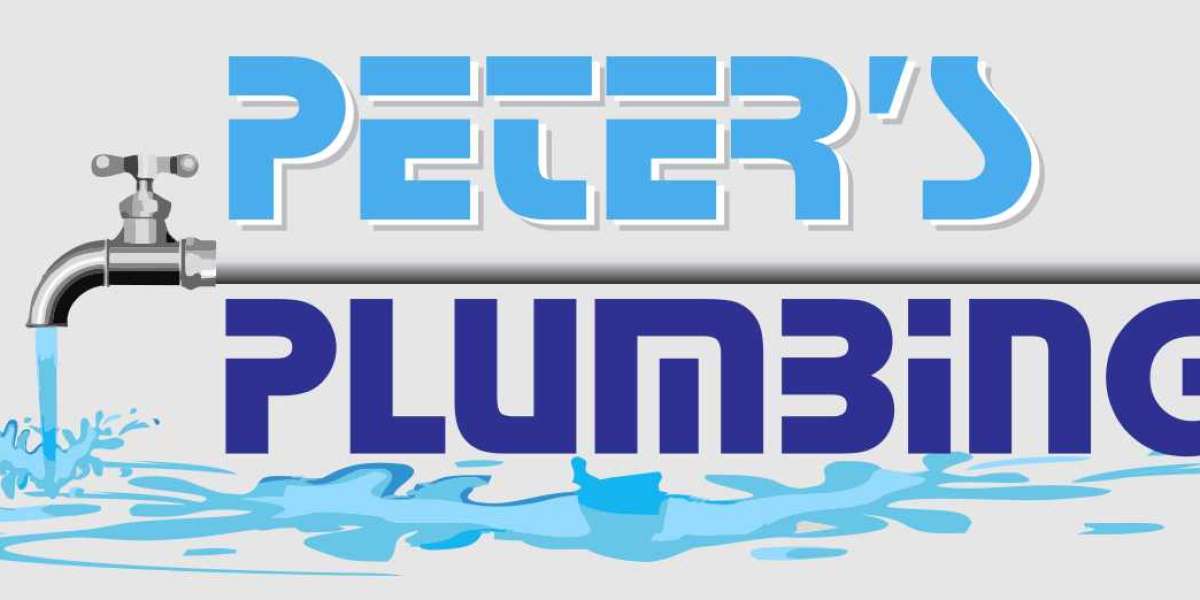In the age of the sharing economy, car rental services have become increasingly popular, allowing individuals to rent out their vehicles to others for short-term use. Turo, a leader in this space, has set a benchmark for peer-to-peer car-sharing platforms. For entrepreneurs and developers interested in creating a Turo clone app, understanding the key features and best practices is crucial for success. This comprehensive guide delves into the essential components and strategies required to build a robust Turo clone app.
Introduction to Peer-to-Peer Car Sharing
Peer-to-peer (P2P) car sharing allows individuals to rent out their vehicles to others via a digital platform. This model offers several advantages over traditional car rental services, including cost savings, convenience, and a wider variety of vehicle options. Turo, established in 2010, is one of the most prominent platforms in this sector, enabling users to list their cars and rent vehicles from private owners.
Advantages of P2P Car Sharing
- Cost-Effective: Lower rental rates compared to traditional car rental companies.
- Convenience: Flexible pick-up and drop-off locations.
- Variety: Access to a wide range of vehicles, from economy cars to luxury vehicles.
- Environmental Benefits: Promotes better utilization of existing vehicles, reducing the need for new car production.
Key Players in the Market
Apart from Turo, several other platforms operate in the P2P car-sharing space, including Getaround, HyreCar, and Drivy. Understanding their business models and unique features can provide valuable insights for building a competitive Turo clone app.
Market Analysis and Business Model
Before diving into the development process, conducting a thorough market analysis is essential. This includes understanding the target audience, market demand, and competitive landscape.
Target Audience
Identifying the target audience helps in tailoring the app's features and marketing strategies. Potential users include:
- Car Owners: Individuals looking to monetize their idle vehicles.
- Renters: People seeking convenient and affordable car rental options.
- Business Travelers: Professionals needing short-term vehicle rentals for business trips.
- Tourists: Visitors requiring transportation in a new city.
Market Demand
Analyzing market demand involves assessing the popularity of car-sharing services in different regions, user preferences, and seasonal trends. This data can guide decisions on service areas, vehicle categories, and pricing strategies.
Competitive Landscape
Studying competitors helps identify gaps in the market and potential areas for differentiation. Key factors to consider include:
- User Experience: Ease of use, app design, and customer support.
- Features: Unique functionalities that set a platform apart.
- Pricing: Rental rates, fees, and commissions.
- Geographic Reach: Availability in different cities and countries.
Business Model
A successful Turo clone app requires a well-defined business model. Common revenue streams include:
- Commission Fees: A percentage of each transaction.
- Subscription Plans: Monthly or annual fees for premium features.
- Advertising: In-app advertisements from related businesses.
- Partnerships: Collaborations with insurance companies, maintenance providers, and travel agencies.
Key Features of a Turo Clone App
Building a robust Turo clone app involves incorporating several key features that enhance user experience, ensure security, and streamline operations. Here are the essential components:
User Registration and Profiles
A seamless registration process is crucial for onboarding users quickly. Key elements include:
- Social Media Integration: Allow users to sign up using their social media accounts (e.g., Facebook, Google) for quicker registration.
- Email and Phone Verification: Ensure the authenticity of users through verification processes.
- User Profiles: Detailed profiles with information such as name, contact details, and profile pictures.
Vehicle Listings and Search
Allow car owners to list their vehicles and provide renters with an efficient search mechanism.
- Vehicle Listing: Owners can provide detailed descriptions, upload photos, set availability, and specify rental rates.
- Advanced Search Filters: Renters can search for vehicles based on criteria such as location, vehicle type, price range, and availability.
- Map View: Visual representation of available vehicles on a map for easier location-based search.
Booking and Reservations
Streamline the booking process to ensure a smooth user experience.
- Instant Booking: Allow renters to book vehicles instantly without waiting for owner approval.
- Request to Book: Option for owners to review and approve rental requests.
- Booking Calendar: A visual calendar for owners to manage availability and for renters to view availability.
Payment Gateway Integration
Secure and reliable payment processing is vital for user trust.
- Multiple Payment Options: Support for credit/debit cards, digital wallets, and bank transfers.
- Secure Transactions: Encryption and security protocols to protect user data and transactions.
- Payment Scheduling: Automated payment collection based on rental agreements.
Insurance and Safety Features
Providing insurance and ensuring safety are critical aspects of a car-sharing platform.
- Insurance Options: Integration with insurance providers to offer coverage for rentals.
- User Verification: ID verification, driving license validation, and background checks for added security.
- Emergency Assistance: 24/7 roadside assistance and customer support in case of emergencies.
Reviews and Ratings
Implement a robust review and rating system to build trust and transparency.
- User Reviews: Allow renters and owners to rate and review each other based on their experiences.
- Feedback System: Enable users to provide detailed feedback and suggestions for improvement.
Notifications and Alerts
Keep users informed with timely notifications and alerts.
- Push Notifications: Real-time updates on booking status, payment confirmations, and messages.
- Email and SMS Alerts: Notifications via email and SMS for important updates and reminders.
Customer Support and Dispute Resolution
Offering excellent customer support can enhance user satisfaction and loyalty
- In-App Chat: Live chat support for instant assistance.
- Help Center: Comprehensive FAQ section and support articles.
- Dispute Resolution: Mechanism for handling disputes between renters and owners.
GPS and Real-Time Tracking
Enhance safety and convenience with GPS and real-time tracking features.
- Vehicle Tracking: Real-time tracking of rented vehicles for both owners and renters.
- Route Optimization: Suggestions for optimal routes based on traffic conditions.
Admin Panel and Analytics
A powerful admin panel is essential for managing the platform and making data-driven decisions.
- User Management: Tools for managing user accounts, listings, and transactions.
- Analytics Dashboard: Insights into platform performance, user behavior, and financial metrics.
- Content Management: Manage content such as terms of service, privacy policy, and FAQs.
Technical Stack and Development Process
Choosing the right technical stack and following a structured development process is crucial for building a scalable and efficient Turo clone app.
Front-End Development
The front end is the user-facing part of the app and includes the user interface (UI) and user experience (UX) design.
- Languages: HTML, CSS, JavaScript
- Frameworks: React.js, Angular, or Vue.js for web development; Swift (iOS) and Kotlin/Java (Android) for mobile apps.
- UI/UX Design: Focus on creating an intuitive and visually appealing interface.
Back-End Development
The back-end handles the server-side logic, database management, and integration with third-party services.
- Languages: Node.js, Python, Ruby, or Java
- Frameworks: Express.js (Node.js), Django (Python), Ruby on Rails (Ruby), Spring (Java)
- Databases: SQL (MySQL, PostgreSQL) or NoSQL (MongoDB, Firebase)
- APIs: RESTful APIs for communication between the front-end and back-end.
Cloud Services and Hosting
Choosing reliable cloud services and hosting providers is essential for scalability and performance.
- Cloud Providers: AWS, Google Cloud, Microsoft Azure
- Storage Solutions: Amazon S3, Google Cloud Storage
- CDN: Content Delivery Network (e.g., Cloudflare) for faster content delivery.
Third-Party Integrations
Integrating third-party services can enhance functionality and streamline development.
- Payment Gateways: Stripe, PayPal, Square
- SMS and Email Services: Twilio, SendGrid
- Maps and GPS: Google Maps API, Mapbox
- Development Process
Following a structured development process ensures timely delivery and quality assurance.
- Prototyping: Create wireframes and prototypes to visualize the app.
- Development: Write and test the code for both front-end and back-end.
- Testing: Conduct thorough testing (unit, integration, system, and user acceptance testing) to identify and fix bugs.
- Deployment: Deploy the app to production and make it available to users.
- Maintenance: Regular updates and maintenance to fix issues and add new features.
User Experience and Interface Design
A well-designed user interface (UI) and user experience (UX) are critical for user satisfaction and retention. Here are some best practices for designing a Turo clone app:
Simplicity and Clarity
Keep the design simple and clear to ensure ease of use.
- Intuitive Navigation: Design a logical and straightforward navigation flow.
- Minimalist Design: Avoid clutter and focus on essential elements.
- Consistent Layout: Maintain consistency in design elements (e.g., buttons, fonts, colors) across the app.
Responsive Design
Ensure the app works seamlessly across different devices and screen sizes.
- Mobile-First Approach: Design for mobile devices first, then scale up for tablets and desktops.
- Flexible Grid System: Use a grid system that adapts to various screen sizes.
User Onboarding
Implement an effective onboarding process to guide new users.
- Interactive Tutorials: Provide step-by-step tutorials to help users understand how to use the app.
- Tooltips and Hints: Offer contextual help through tooltips and hints.
Visual Appeal
Create a visually appealing design that attracts and retains users.
- High-Quality Images: Use high-resolution images for vehicle listings.
- Brand Identity: Develop a unique brand identity through colors, logos, and typography.
- Animations and Transitions: Use subtle animations and transitions to enhance the user experience.
Accessibility
Make the app accessible to users with disabilities.
- Screen Reader Support: Ensure compatibility with screen readers.
- Keyboard Navigation: Enable keyboard navigation for all interactive elements.
- Color Contrast: Use high-contrast colors to improve readability.
Security and Compliance
Security and compliance are paramount for building trust with users and protecting sensitive data. Here are some key considerations:
Data Encryption
Encrypt sensitive data to protect it from unauthorized access.
- SSL/TLS: Use SSL/TLS for secure communication between the app and the server.
- Data Encryption: Encrypt sensitive data stored in the database.
User Authentication
Implement robust authentication mechanisms to verify user identities.
- Multi-Factor Authentication (MFA): Require additional verification steps for added security.
- OAuth: Use OAuth for secure user authentication with third-party services.
Privacy Policies
Ensure compliance with data privacy regulations.
- GDPR: Comply with the General Data Protection Regulation (GDPR) for users in the EU.
- CCPA: Adhere to the California Consumer Privacy Act (CCPA) for users in California.
- User Consent: Obtain explicit consent from users for data collection and processing.
Secure Coding Practices
Follow secure coding practices to prevent vulnerabilities.
- Input Validation: Validate all user inputs to prevent SQL injection and other attacks.
- Access Control: Implement role-based access control to restrict access to sensitive features.
Regular Security Audits
Conduct regular security audits to identify and fix vulnerabilities.
- Penetration Testing: Perform penetration testing to identify potential security weaknesses.
- Vulnerability Scanning: Use automated tools to scan for vulnerabilities.
Marketing and User Acquisition
Effective marketing and user acquisition strategies are essential for the success of a Turo clone app. Here are some key strategies:
Digital Marketing
Utilize digital marketing channels to reach potential users.
- Search Engine Optimization (SEO): Optimize the app's website and content for search engines.
- Social Media Marketing: Promote the app on social media platforms like Facebook, Instagram, and Twitter.
- Content Marketing: Create valuable content (e.g., blog posts, and videos) to attract and engage users.
Paid Advertising
Invest in paid advertising to boost visibility and drive user acquisition.
- Google Ads: Run targeted ads on Google to reach potential users.
- Social Media Ads: Use Facebook and Instagram ads to target specific demographics.
- Influencer Marketing: Collaborate with influencers to promote the app.
Referral Programs
Implement referral programs to encourage users to invite others.
- Referral Incentives: Offer rewards (e.g., discounts, credits) for successful referrals.
- Easy Sharing: Make it easy for users to share referral links with their contacts.
Partnerships
Form partnerships with relevant businesses to expand reach.
- Travel Agencies: Partner with travel agencies to offer car rental services to travelers.
- Insurance Companies: Collaborate with insurance companies to provide coverage for rentals.
Community Engagement
Engage with the community to build brand loyalty.
- Social Media Interaction: Respond to user comments and messages on social media.
- User Events: Host events (e.g., meetups, webinars) to connect with users.
Monetization Strategies
A Turo clone app can generate revenue through various monetization strategies. Here are some common methods:
Commission Fees
Charge a commission fee on each transaction between renters and owners.
- Percentage-Based: Charge a percentage of the rental fee.
- Fixed Fee: Charge a fixed fee per transaction.
Subscription Plans
Offer subscription plans for premium features and services.
- Premium Listings: Allow car owners to pay for premium listings that get more visibility.
- Advanced Features: Offer advanced features (e.g., enhanced insurance, priority support) to subscribers.
Advertising
Generate revenue through in-app advertisements.
- Banner Ads: Display banner ads within the app.
- Sponsored Listings: Allow businesses to sponsor vehicle listings.
Ancillary Services
Offer additional services to generate revenue.
- Insurance: Partner with insurance companies to offer rental insurance.
- Maintenance: Provide vehicle maintenance and cleaning services.
Challenges and Solutions
Building and maintaining a Turo clone app comes with various challenges. Here are some common challenges and their solutions:
User Trust and Safety
Building trust between users is crucial for a successful car-sharing platform.
- User Verification: Implement robust verification processes to ensure user authenticity.
- Insurance: Offer comprehensive insurance options to protect both renters and owners.
- Reviews and Ratings: Encourage users to rate and review each other to build trust.
Regulatory Compliance
Complying with local regulations can be complex and challenging.
- Legal Consultation: Consult with legal experts to ensure compliance with local laws.
- Licensing: Obtain necessary licenses and permits for operating the platform.
- Data Privacy: Implement data privacy measures to comply with regulations like GDPR and CCPA.
Competition
The car-sharing market is competitive, and standing out can be challenging.
- Unique Features: Identify and implement unique features that differentiate the app.
- Quality Service: Focus on providing excellent customer service to retain users.
- Marketing: Invest in effective marketing strategies to increase visibility.
Technical Issues
Technical issues can impact user experience and platform performance.
- Scalability: Design the app architecture to handle scalability.
- Regular Maintenance: Perform regular maintenance and updates to ensure smooth operation.
- User Feedback: Gather and act on user feedback to improve the app.
Future Trends in Car-Sharing Apps
The car-sharing industry is continuously evolving, and staying ahead of trends can provide a competitive advantage. Here are some future trends:
Electric and Autonomous Vehicles
The rise of electric and autonomous vehicles is set to transform the car-sharing industry.
- Electric Vehicle Integration: Incorporate electric vehicles into the platform to meet growing demand.
- Autonomous Vehicles: Prepare for the integration of autonomous vehicles as the technology matures.
Sustainable Practices
Sustainability is becoming increasingly important for consumers.
- Eco-Friendly Options: Promote eco-friendly vehicle options and encourage users to choose them.
- Carbon Offsetting: Implement carbon offset programs to reduce the environmental impact.
Blockchain Technology
Blockchain technology can enhance security and transparency in car-sharing platforms.
- Smart Contracts: Use smart contracts for secure and automated transactions.
- Decentralized Systems: Explore decentralized systems for data security and user privacy.
Enhanced User Experience
Improving user experience remains a key focus for car-sharing platforms.
- AI and Machine Learning: Use AI and machine learning to provide personalized recommendations and improve search results.
- Augmented Reality (AR): Implement AR features for vehicle inspections and virtual tours.
Conclusion
Building a robust Turo clone app requires careful planning, execution, and ongoing improvements. By incorporating essential features, following best practices, and staying ahead of industry trends, entrepreneurs and developers can create a successful peer-to-peer car-sharing platform. The future of car sharing is bright, with advancements in technology and growing consumer demand paving the way for innovative solutions and enhanced user experiences.













